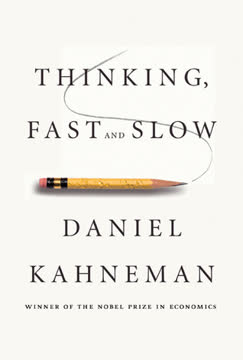Key Takeaways
1. Personality Styles: A Spectrum of Normalcy
The fourteen personality styles that we identify are the common, utterly human, nonpathological versions of the extreme, disordered constellations identified in the DSM-III-R and DSM-IV (including those from the Appendix of each edition).
From Disorder to Style. The book reframes personality disorders as extreme versions of normal personality styles, emphasizing that everyone possesses a unique blend of these styles. This perspective shifts the focus from pathology to understanding individual differences and appreciating the strengths and potential challenges associated with each style.
Fourteen Styles. The book identifies fourteen distinct personality styles, each with its own set of characteristics, strengths, and potential pitfalls. These styles are not mutually exclusive; rather, individuals typically exhibit a combination of several styles, creating a complex and nuanced personality profile.
Understanding Differences. By learning to recognize and understand these personality styles, readers can gain valuable insights into their own behavior and motivations, as well as the behavior of others. This understanding can foster greater empathy, improve communication, and enhance relationships in all areas of life.
2. Genes and Environment: The Architects of Personality
As with a number of physical traits, such as height, genes confer a range of personality predispositions.
Nature and Nurture. The book acknowledges the interplay of genetic predispositions (temperament) and environmental influences (experiences) in shaping personality. Genes provide a range of possibilities, while upbringing, relationships, and life events sculpt the final expression of an individual's personality style.
Temperament as Foundation. Temperament, the inborn biological aspect of personality, includes factors such as activity level, mood range, and reaction intensity. These temperamental traits provide a foundation upon which experiences build and shape the individual's character.
Experience as Sculptor. While temperament sets the stage, environment and life experiences play a crucial role in shaping personality. Positive experiences can nurture and strengthen adaptive traits, while adverse experiences can exacerbate vulnerabilities and lead to maladaptive patterns.
3. Six Domains: Mapping Your Personality's Landscape
Your personality style is what causes—after you have gained thirty pounds, started to turn gray, and begun wearing glasses—your classmates at your twenty-fifth high school reunion to exclaim, “Why, you haven’t changed a bit!”
Comprehensive Assessment. The book utilizes six key domains to assess and understand personality styles: Self, Relationships, Work, Emotions, Self-Control, and Real World. These domains provide a framework for examining how each style manifests in different areas of life.
Interconnected Domains. Each personality style influences functioning in all six domains, with one or two domains often dominating the style. For example, Work is key to the Conscientious style, while Relationships are central to the Devoted style.
Unique Patterns. By examining an individual's functioning across these six domains, a unique personality pattern emerges, revealing the individual's strengths, vulnerabilities, and characteristic ways of navigating the world.
4. Conscientious Style: The Power of Responsibility and Order
To be Conscientious is to be a person of conscience.
The "Right Stuff." The Conscientious style is characterized by hard work, strong moral principles, a desire to do things "right," perfectionism, perseverance, orderliness, prudence, and a tendency to accumulate. These traits make Conscientious individuals reliable, responsible, and dedicated.
Work as Key Domain. Work is the central domain for Conscientious individuals, influencing their self-image, relationships, and emotional well-being. They find meaning and satisfaction in achieving goals and meeting high standards of performance.
Potential Pitfalls. While Conscientiousness is often valued, extreme levels can lead to inflexibility, workaholism, difficulty relaxing, and a tendency to judge others harshly. Balancing Conscientious traits with other styles is crucial for overall well-being.
5. Self-Confident Style: The Allure and Pitfalls of Stardom
I’ve been called arrogant, but so what!
"Star Quality." The Self-Confident style is marked by self-regard, ambition, political savvy, competitiveness, a sense of stature, vivid dreams, self-awareness, and poise. These traits enable Self-Confident individuals to achieve success and attract attention.
Self as Key Domain. The Self domain is central to the Self-Confident style, driving their ambition, shaping their relationships, and influencing their perception of the world. They have a strong sense of entitlement and believe in their own destiny.
Potential Pitfalls. While Self-Confidence can be a powerful asset, extreme levels can lead to arrogance, a lack of empathy, and a tendency to exploit others. Balancing Self-Confidence with other styles is crucial for maintaining healthy relationships and ethical behavior.
6. Devoted Style: Finding Fulfillment in Connection and Service
I’ll go out of my way to do things for other people—sometimes even unpleasant things—to get them to like me.
"The Good Mate." The Devoted style is characterized by commitment, a desire for togetherness, teamwork, deference, a focus on harmony, consideration for others, and a strong need for attachment. These traits make Devoted individuals loving, supportive, and reliable partners and friends.
Relationships as Key Domain. Relationships are central to the Devoted style, providing meaning, purpose, and fulfillment. Devoted individuals prioritize the needs and feelings of others and find happiness in serving and supporting those they care about.
Potential Pitfalls. While Devotion is often valued, extreme levels can lead to a loss of self-identity, a tendency to be easily influenced, and a fear of being alone. Balancing Devotion with other styles is crucial for maintaining a sense of autonomy and self-worth.
7. Dramatic Style: The Art of Emotional Expression and Connection
I love being the center of attention—it’s exhilarating.
"The Life of the Party." The Dramatic style is marked by emotional expressiveness, a vivid imagination, a desire for attention, a focus on appearance, a strong sense of sexuality, a tendency to become easily engaged, and a willingness to embrace new ideas. These traits make Dramatic individuals entertaining, engaging, and captivating.
Emotions and Relationships as Key Domains. Emotions and Relationships are central to the Dramatic style, driving their behavior, shaping their self-image, and influencing their interactions with others. They seek to create emotional connections and express themselves in a colorful and engaging manner.
Potential Pitfalls. While Dramatic expression can be captivating, extreme levels can lead to suggestibility, a tendency to exaggerate, and difficulty sustaining long-term relationships. Balancing Dramatic traits with other styles is crucial for maintaining stability and authenticity.
8. Vigilant Style: The Strength and Burden of Constant Awareness
I am not a very trusting person, even though I would like to be.
"The Survivor." The Vigilant style is characterized by autonomy, caution, perceptiveness, a strong sense of self-defense, alertness to criticism, and a high value on fidelity. These traits make Vigilant individuals independent, resourceful, and capable of protecting themselves and others.
Relationships as Key Domain. Relationships are central to the Vigilant style, but their autonomy and need for control shape their interactions with others. They are cautious in forming relationships and value loyalty and trustworthiness above all else.
Potential Pitfalls. While Vigilance can be a valuable asset, extreme levels can lead to mistrust, suspicion, and difficulty forming close relationships. Balancing Vigilant traits with other styles is crucial for maintaining healthy connections and avoiding paranoia.
9. Sensitive Style: Finding Security in Familiarity and Connection
I often find social situations unbearable, even with people I know.
"The Homebody." The Sensitive style is marked by a preference for familiarity, a strong concern for what others think, circumspection, polite reserve, a need for defined roles, and a desire for privacy. These traits make Sensitive individuals loyal, considerate, and deeply connected to their families and close friends.
Emotions and Relationships as Key Domains. Emotions and Relationships are central to the Sensitive style, driving their behavior, shaping their self-image, and influencing their interactions with others. They seek to create safe and secure environments and value close, meaningful connections.
Potential Pitfalls. While Sensitivity can be a valuable asset, extreme levels can lead to anxiety, social inhibition, and a fear of new experiences. Balancing Sensitive traits with other styles is crucial for maintaining a sense of independence and embracing new opportunities.
10. Leisurely Style: The Pursuit of Comfort and Independence
I hate routine and I’m not very good at obligations, so I put things off as long as I can or I just never get around to doing them.
"California Dreaming." The Leisurely style is characterized by a belief in inalienable rights, a sense of "enough is enough," a resistance to exploitation, a relaxed approach to time, self-acceptance, a belief in luck, and mixed feelings about relationships. These traits make Leisurely individuals easygoing, comfortable, and resistant to external pressures.
Self and Relationships as Key Domains. Self and Relationships are central to the Leisurely style, shaping their priorities and influencing their interactions with others. They value their independence and personal pursuit of happiness, while also seeking connection and companionship.
Potential Pitfalls. While a Leisurely approach can be appealing, extreme levels can lead to procrastination, a lack of ambition, and a tendency to resist responsibility. Balancing Leisurely traits with other styles is crucial for achieving goals and maintaining healthy relationships.
11. Adventurous Style: Embracing Risk and Living in the Moment
I like to act on impulse when the spirit moves me.
"The Challenger." The Adventurous style is marked by nonconformity, a love of challenge, mutual independence, persuasiveness, wanderlust, a history of "wild oats," true grit, and a lack of regrets. These traits make Adventurous individuals daring, resourceful, and capable of pushing boundaries.
Self and Self-Control as Key Domains. Self and Self-Control are central to the Adventurous style, driving their behavior, shaping their self-image, and influencing their interactions with the world. They seek intense, visceral experiences and are willing to take risks to achieve them.
Potential Pitfalls. While Adventurousness can be exhilarating, extreme levels can lead to recklessness, impulsivity, and a disregard for the safety of themselves and others. Balancing Adventurous traits with other styles is crucial for making responsible decisions and avoiding harm.
12. Serious Style: The Sober Lens of Realism and Responsibility
I tend to see the glass as half empty rather than half full.
"The Realist." The Serious style is characterized by a straight face, a lack of pretension, accountability, cogitation, a sharp appraisal of others, an anticipation of problems, and contrition. These traits make Serious individuals reliable, responsible, and capable of enduring hardship.
Work and Emotions as Key Domains. Work and Emotions are central to the Serious style, shaping their priorities and influencing their interactions with the world. They approach life with a sense of duty and responsibility and are not easily swayed by emotions or sentimentality.
Potential Pitfalls. While Seriousness can be a valuable asset, extreme levels can lead to pessimism, cynicism, and difficulty experiencing joy. Balancing Serious traits with other styles is crucial for maintaining a positive outlook and fostering healthy relationships.
Last updated:
Review Summary
The New Personality Self-Portrait receives generally positive reviews for its insightful analysis of personality types and disorders. Readers appreciate its accuracy in identifying their traits and find it helpful for understanding themselves and others. The book's comprehensive approach, including case studies and coping strategies, is praised. Some criticize outdated examples and research, while others find it transformative. The personality test and detailed descriptions of styles are considered valuable. Overall, readers find it an engaging and rewarding exploration of human personality.
Similar Books







Download PDF
Download EPUB
.epub digital book format is ideal for reading ebooks on phones, tablets, and e-readers.




